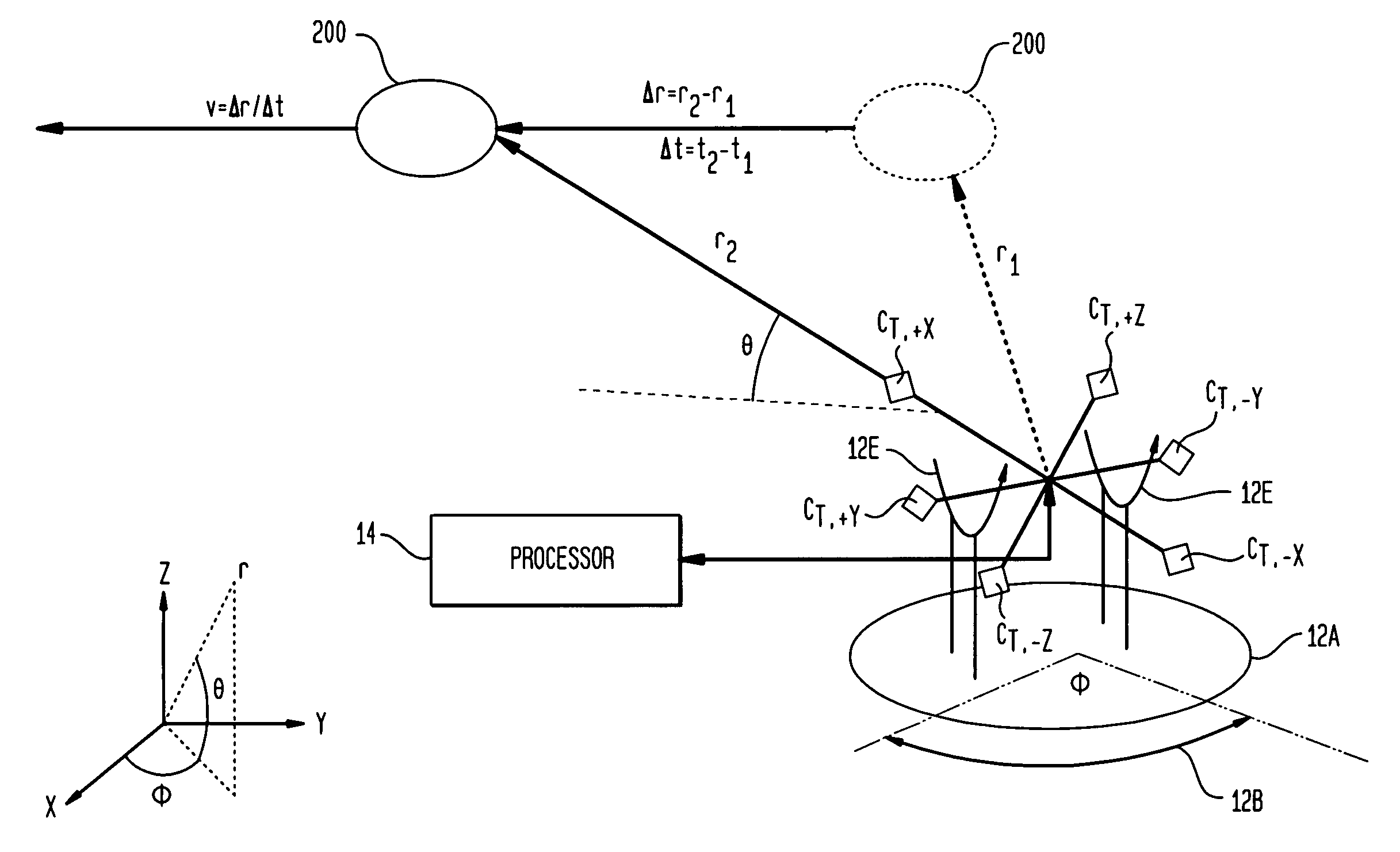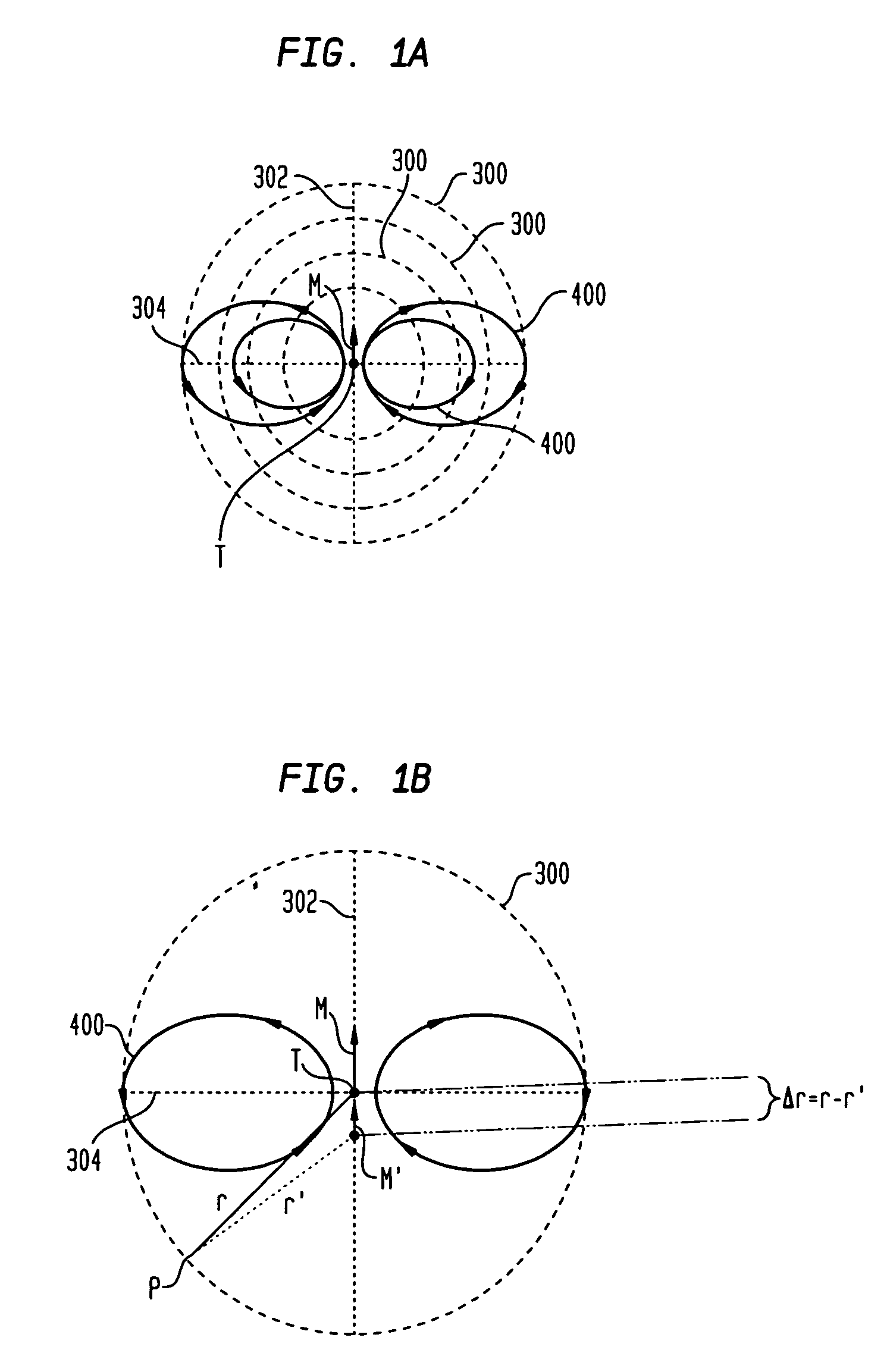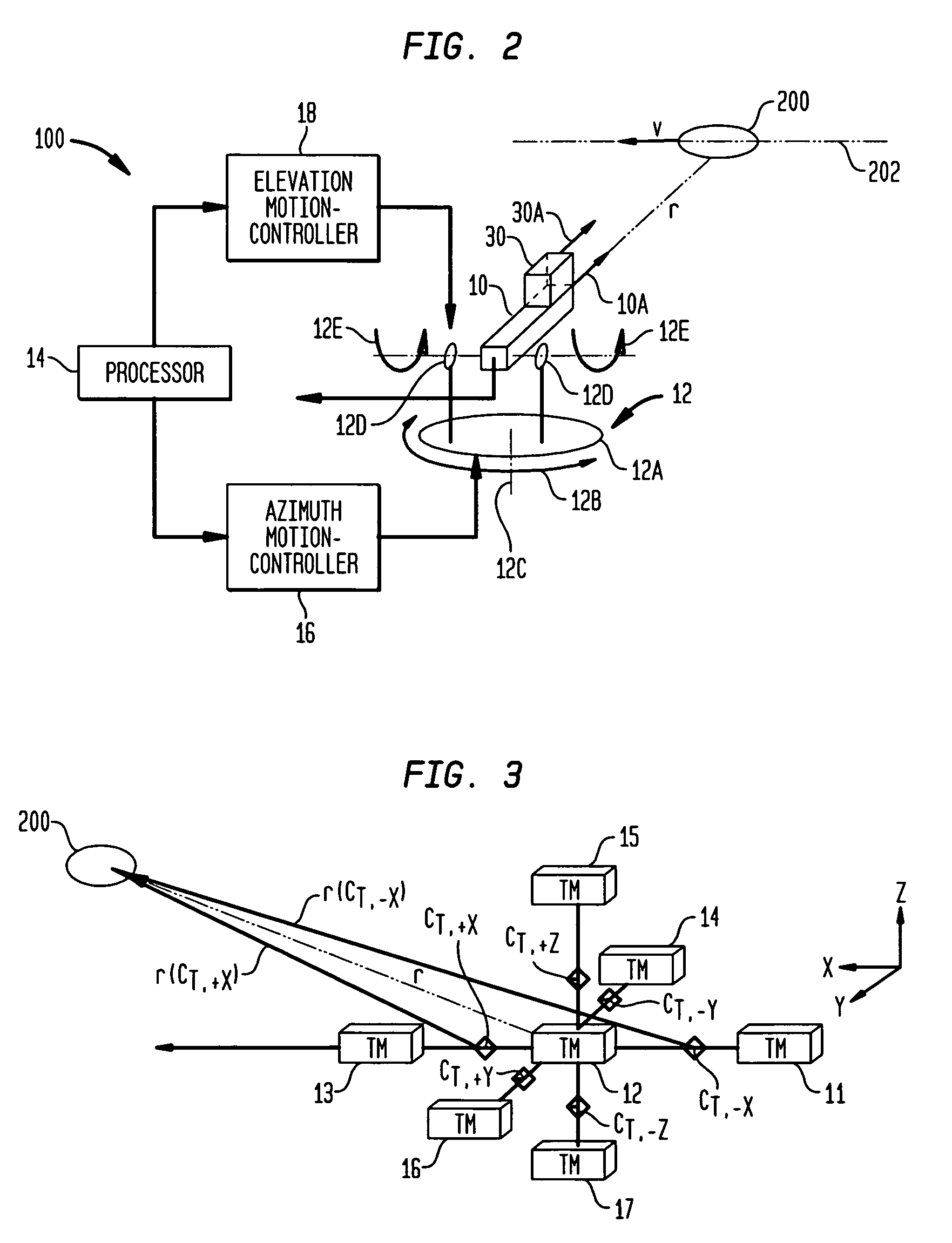Magnetic anomaly sensing-based system for tracking a moving magnetic target
a magnetic target and anomaly sensing technology, applied in the field of tracking systems, can solve the problems of inability to quickly and effectively deploy a practical system, inability to accurately determine the position of objects, and computationally intensive and difficult to implement in a cost effective and easily deployable system. the effect of accurate determination
- Summary
- Abstract
- Description
- Claims
- Application Information
AI Technical Summary
Benefits of technology
Problems solved by technology
Method used
Image
Examples
Embodiment Construction
[0032]Referring again to the drawings and more particularly to FIG. 2, a system for tracking a moving magnetic target 200 in accordance with the present invention is shown and is referenced generally by numeral 100. The term “target” as used herein refers to any object whose movement is of interest such that the tracking thereof is desirable. Magnetic target 200 is any natural or man-made object that moves on the ground, in the air, or in the water, with the object having an inherent magnetic signature owing to the ferrous material(s) that are included in the object's physical structure. Target 200 can be a self-propelled vehicle, a launched projectile without it's own propulsion, etc., that is moving along a path 202 at a constant or accelerating / decelerating velocity “v” thereby making the velocity changeable in direction and magnitude.
[0033]At the heart of system 100 is a magnetic anomaly sensing system 10 that can passively measure magnetic gradient tensors associated with the m...
PUM
 Login to View More
Login to View More Abstract
Description
Claims
Application Information
 Login to View More
Login to View More - R&D
- Intellectual Property
- Life Sciences
- Materials
- Tech Scout
- Unparalleled Data Quality
- Higher Quality Content
- 60% Fewer Hallucinations
Browse by: Latest US Patents, China's latest patents, Technical Efficacy Thesaurus, Application Domain, Technology Topic, Popular Technical Reports.
© 2025 PatSnap. All rights reserved.Legal|Privacy policy|Modern Slavery Act Transparency Statement|Sitemap|About US| Contact US: help@patsnap.com



